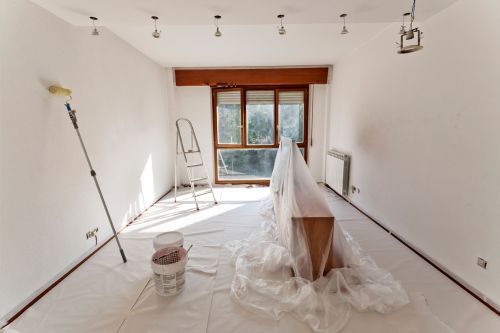The frequency with which you should paint a house is not always the same. It depends on several factors: the use given to each room, the quality of the paint used, exposure to light or humidity, and even the colour. In this guide we explain how often you should renew the paint in your home to keep it in optimum condition.
Contact our professionals
High activity areas: every 2-3 years
Spaces such as corridors, living rooms and children’s rooms often suffer from scratches, stains or wear and tear from daily use. In these cases, it is recommended to repaint every 2 or 3 years, especially if they are light or matt tones.
If you are looking for ideas to renovate your home, you can visit our interior painting section where we share tips and recommended products.
Kitchens and bathrooms: every 3-5 years
These rooms are exposed to moisture, steam and grease, which can cause paint to deteriorate more quickly. If you use washable plastic paints or special paints for wet areas, you can extend the maintenance up to 4 or 5 years.
Facades and exteriors: every 5-8 years
Exposure to sun, rain and pollution causes facades to deteriorate sooner. With good quality paint and a well-executed job, you can space out the renovation up to 8 years.
We recommend you consult our articles on exterior paint if you want to know which is the most resistant for your climate.
Rooms with little use: every 6-8 years
Offices, guest rooms or storage rooms can be well maintained for longer, especially if there is no humidity or constant contact with furniture or people.
Regular cleaning and the use of quality paints can extend this period.
Factors influencing durability
- Paint quality: professional ranges resist more washing and fading.
- Colour: dark colours tend to deteriorate visually earlier.
- Finish: satin or semi-gloss paints are more resistant to rubbing than matt paints.
- Pre-preparation: a good primer and a clean surface extend durability.
Adapt the paint to the rhythm of your home
Not all rooms have the same requirements. Planning repainting according to the actual use of each space allows you to save money and keep your home in perfect condition.
Explore more tips on our painting and decorating blog to improve the result from the first brushstroke.
Other publications that may interest you
Waterproofing paint: what it is and when to apply it outdoors
Leaks don't usually give you any warning. One day you discover a dark spot behind the wardrobe or a corner of the ceiling with buckled paintwork and you realise that damp has been working quietly for some time. In climates with heavy rainfall or in homes close to the...
Most resistant paint types for facades in coastal areas
The façades overlooking the sea are under constant tension. While holidaymakers enjoy the breeze and the sound of the waves, saltpetre is deposited on walls and railings, humidity penetrates through every micro-fissure and the sun, generous in hours and intensity,...
Colours that increase the feeling of space in small houses
You don't need to tear down partitions or do a complete renovation to make your house look bigger. In many cases, paint can completely transform the perception of space. Choosing the right colours not only brings harmony and light, but also creates the illusion of...




